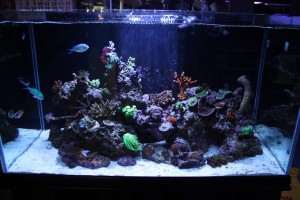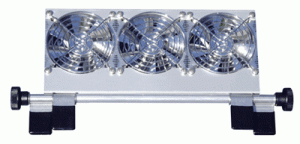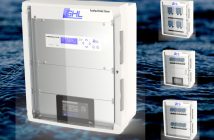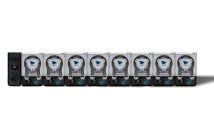Everyone preaches about how important water flow is in our aquariums. While I completely agree that water flow is extremely vital in a reef tank, there’s another type of flow that gets overlooked…and that is air flow. In this article, I will focus on two methods of air flow in order to promote higher pH. One form is agitating the water through a fan blowing across the surface or by injecting bubbles. The other focuses more on the room in which the aquarium is housed, and how closed doors and windows can have a similar effect as stagnant water.
Water has a thin, semi-permeable surface caused by surface tension. This area can prevent gas exchange in your aquarium, causing pH to drop off sharply. Most people break this tension by adding flow to their aquariums. Water flow causes ripples and other surface disturbance that allows oxygen to enter the water and other gases to escape. Sometimes though, an aquarium might have a constantly low pH, despite proper water flow and even the use of a protein skimmer, which physically injects air into the water.
Several years ago, people found out that directing fans over your aquarium can help keep it cool through evaporation. They didn’t immediately realize a secondary benefit of promoting gas exchange in their aquariums. The fans blow fresh air over the water’s surface, causing excess CO2 to leave the aquarium’s water and O2 to enter. This helps keeps pH elevated and the water oxygenated. But sometimes even this isn’t enough to fight off low pH.
When your aquarium is housed in a room with shut doors and windows, the air inside that room can become stale and stagnant like the aquarium’s water. The air conditioner in your home might not come on during the day when you’re at work, or your home is cool enough at night that you don’t need the A/C. So in effect, no new air is coming into the room. This could lead to low O2 concentrations in both the aquarium and room, pushing down the water’s pH. To help combat this, open up a window, turn on a ceiling fan or your A/C, keep the door to the room open, or house the aquarium in a larger room.
I and several other friends have experienced pH problems when housing aquariums in small, closed rooms. You may not have the same issues with your setup, but it’s definitely something to think about if all other options have been exhausted.








